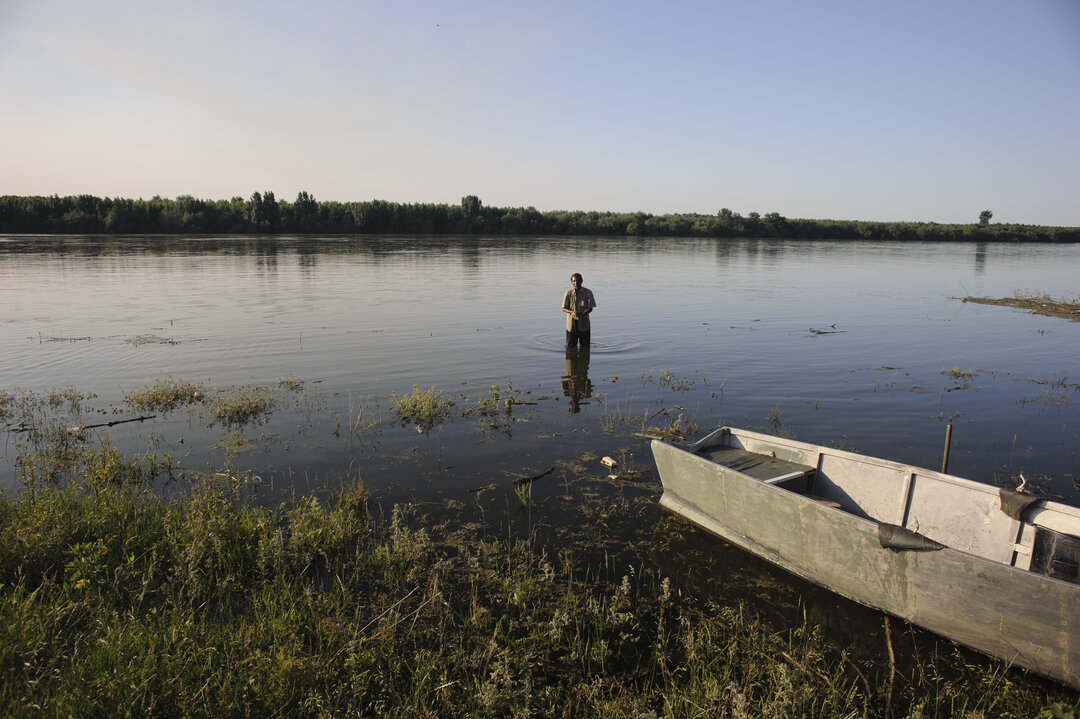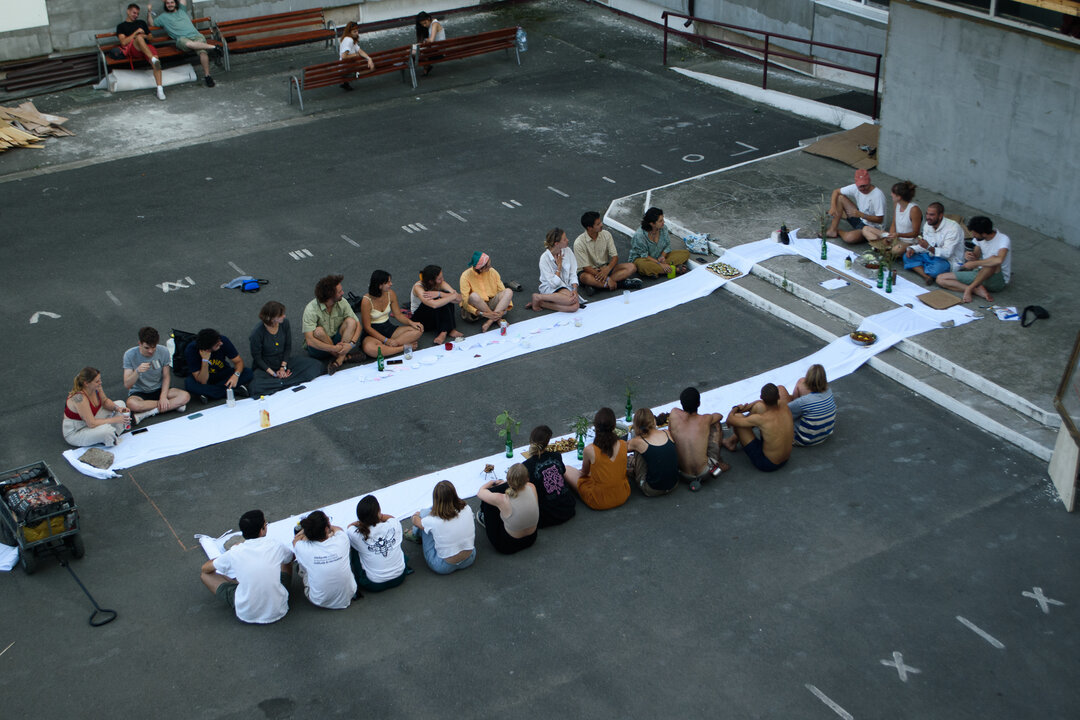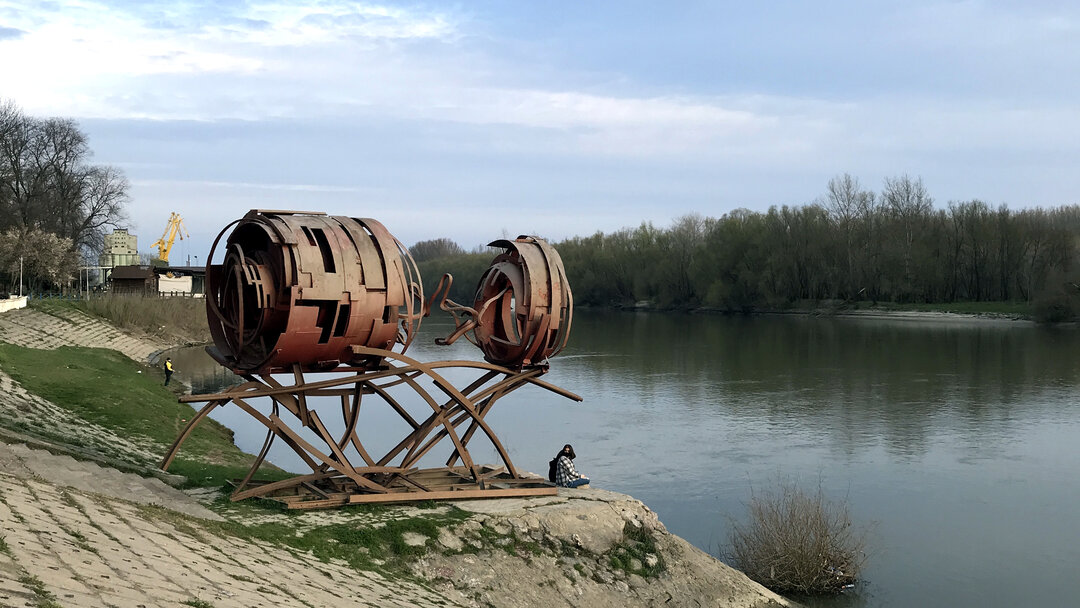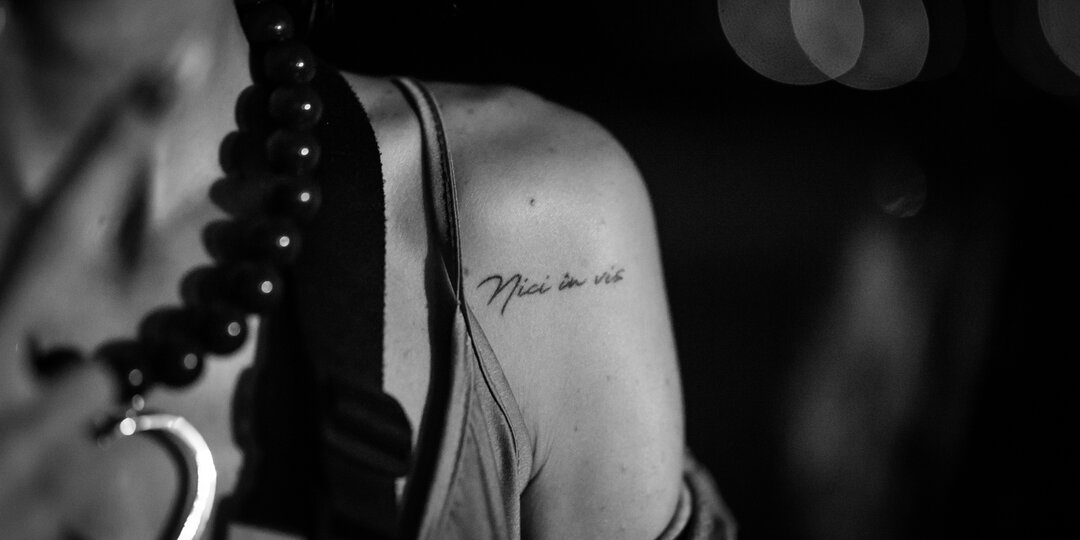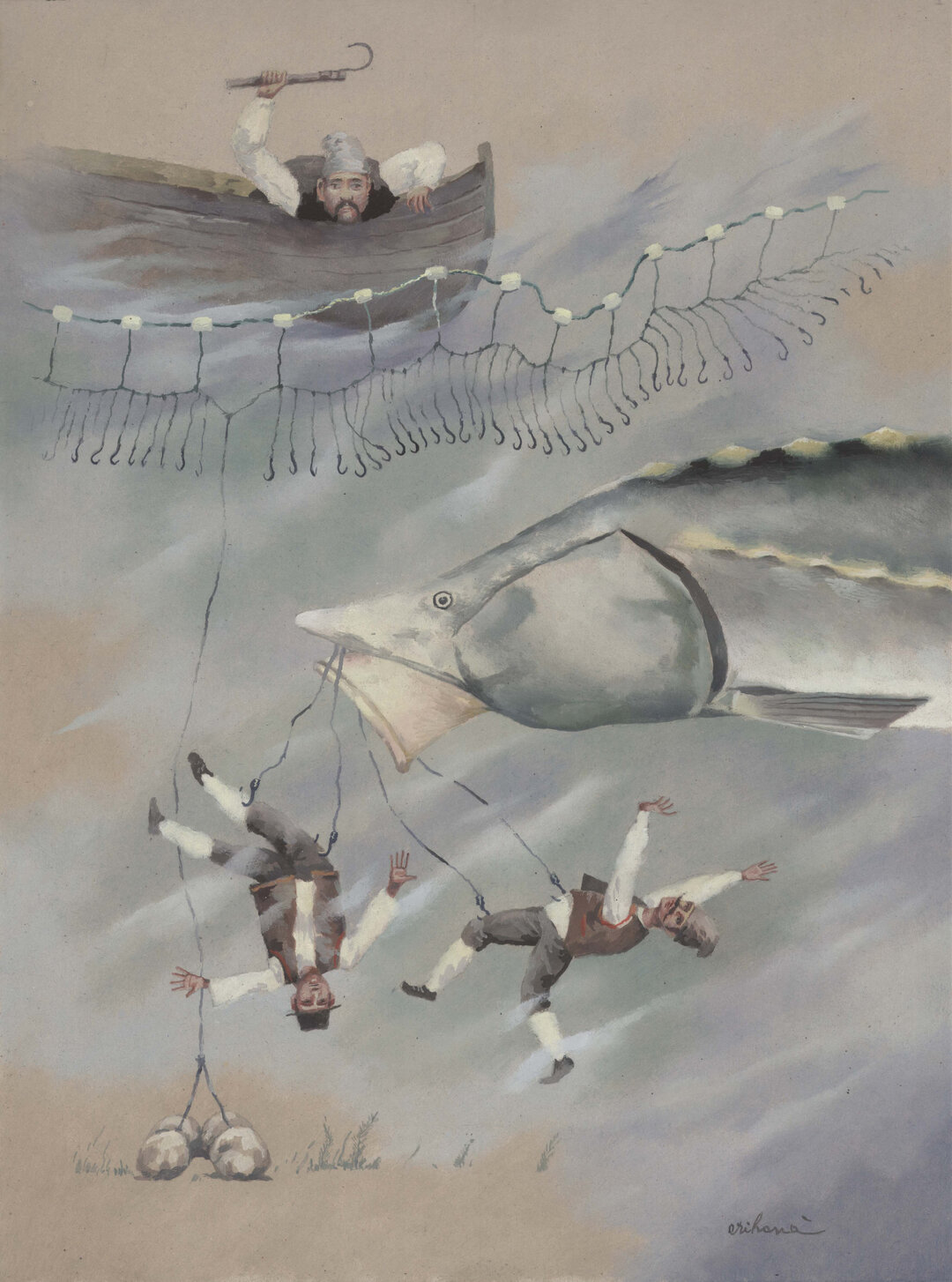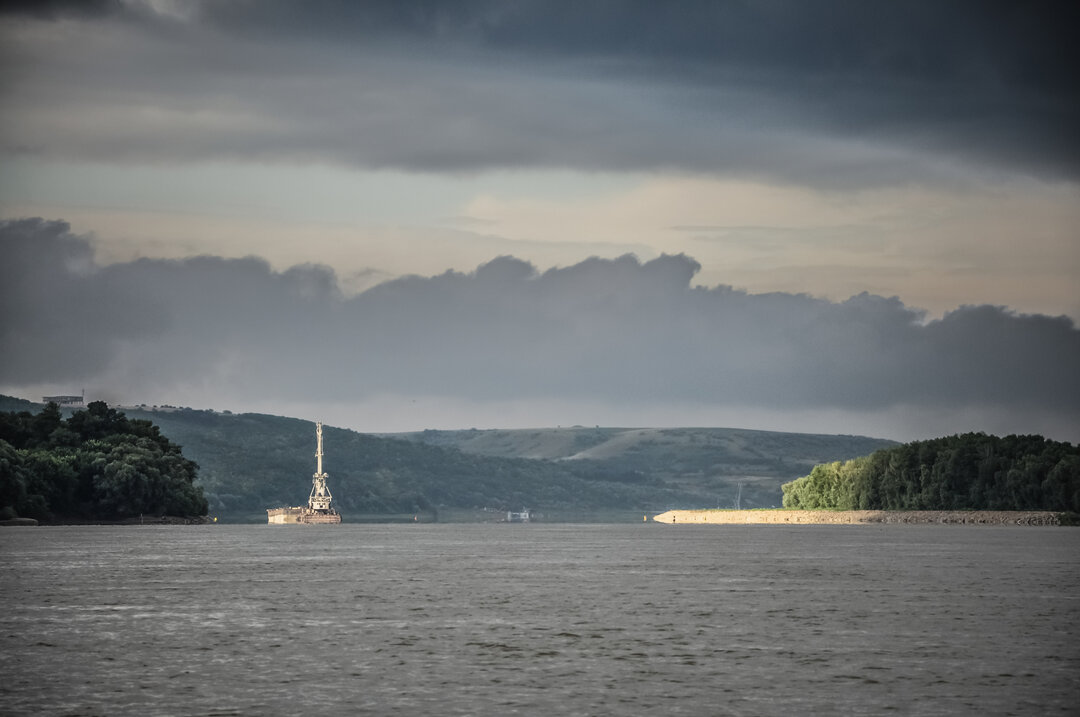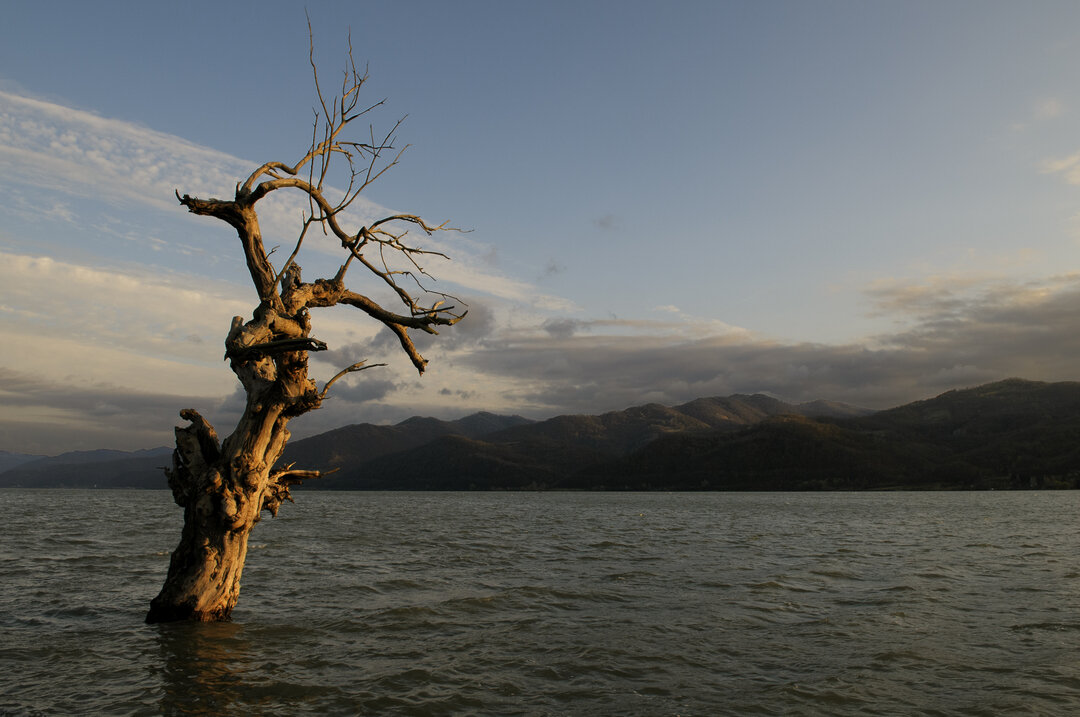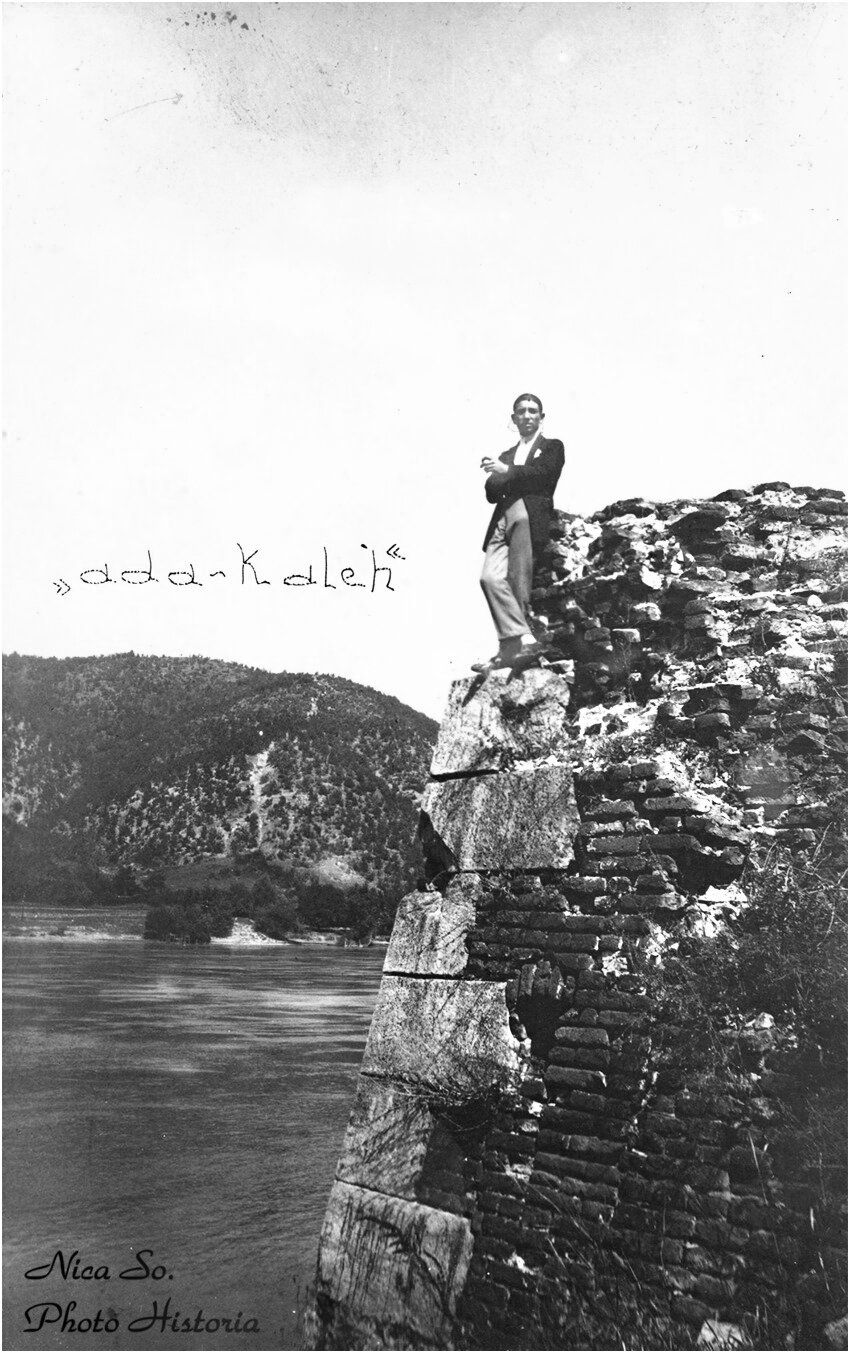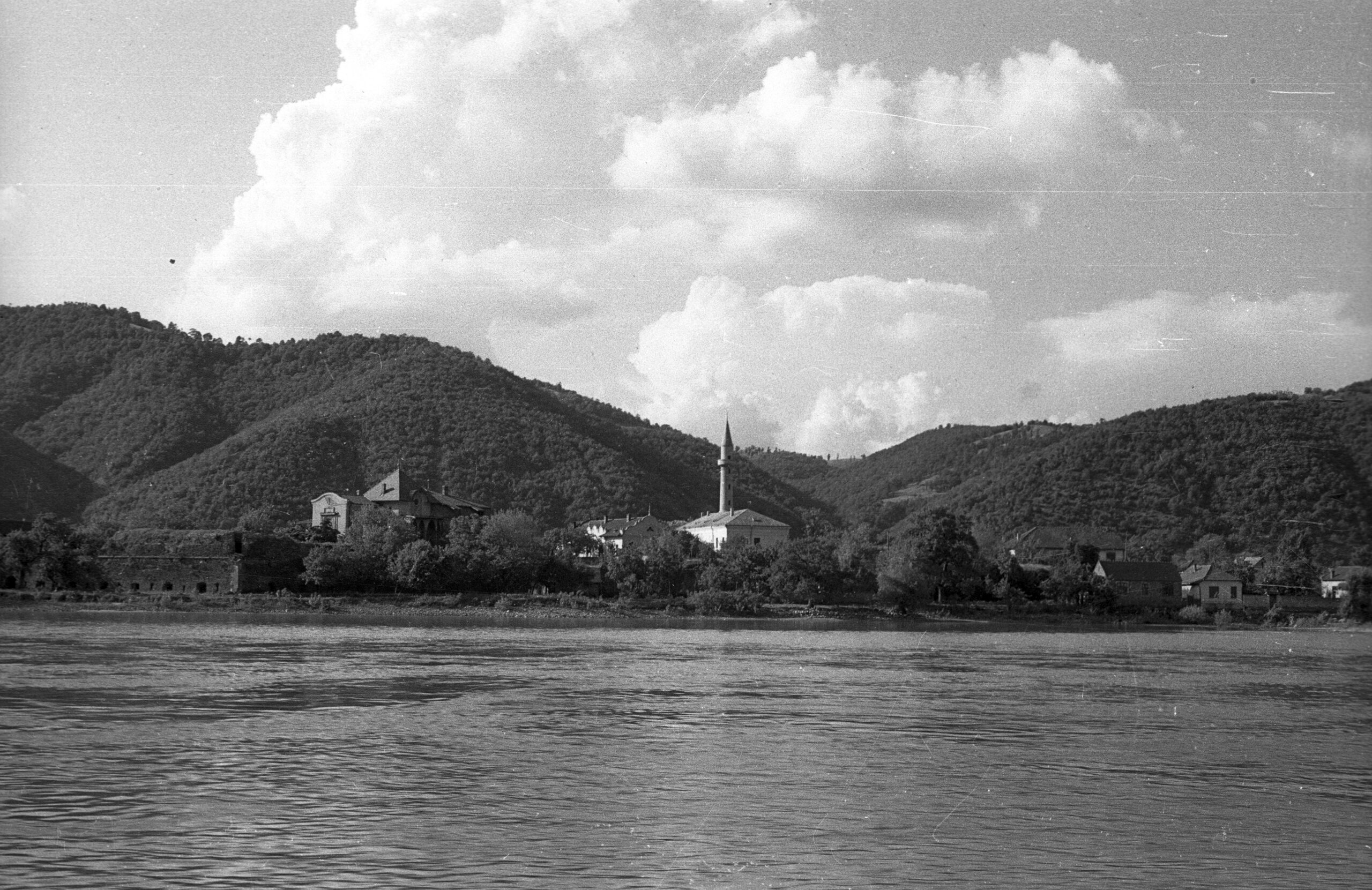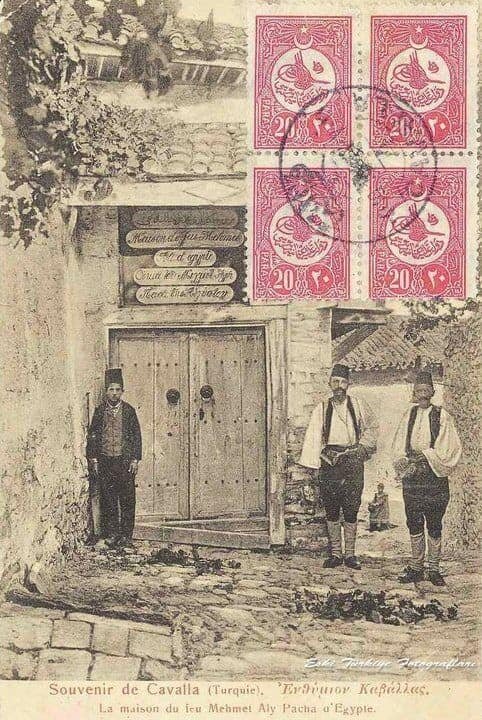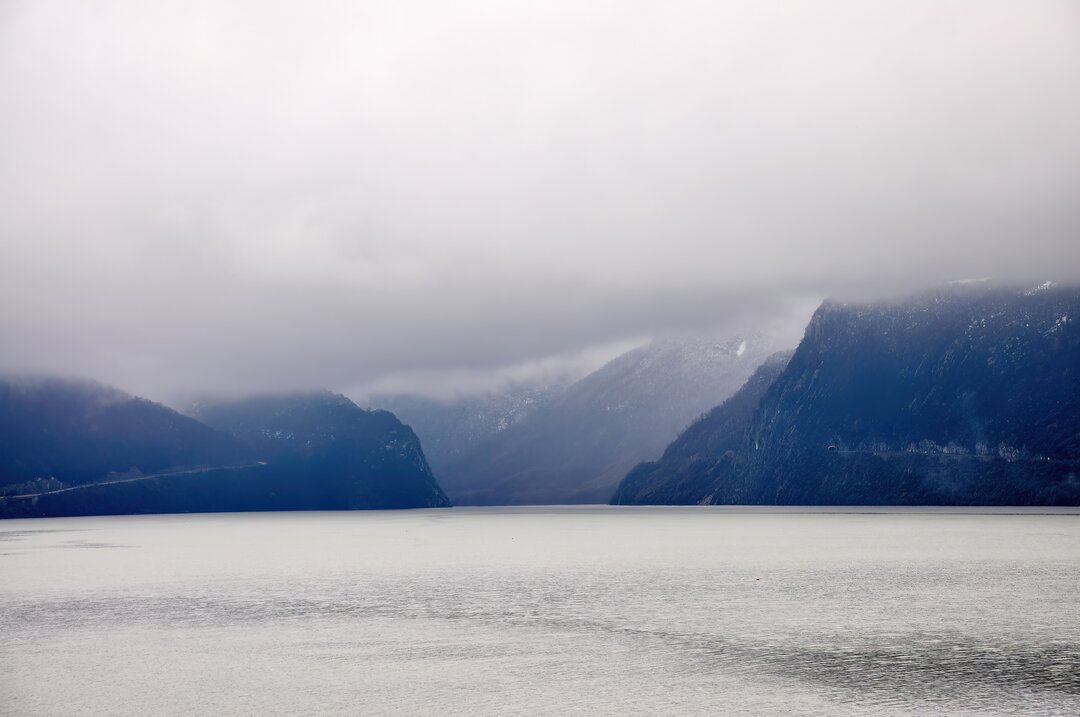
The story of Ada Kaleh Island
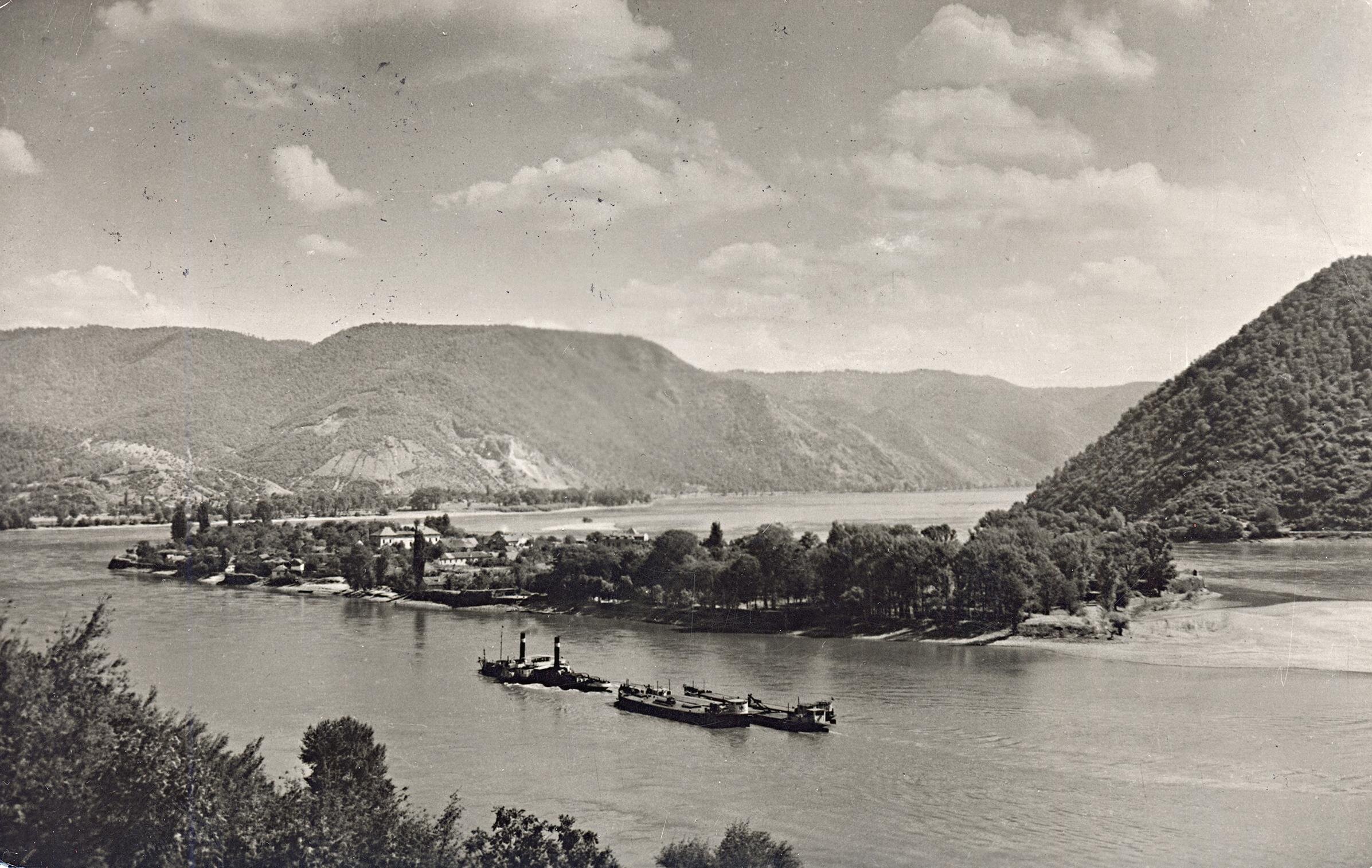
"Illustrated Reality" July 15, 1934
- "DID YOU SEE WHERE THE OLD WOMAN ENDED UP?"
- "What old woman? "
The chauffeur points to me on the side of the sledge, a fragment of rock detached from the mountain and rolled all the way here. We're on the road between Turnu-Severin and Orșova, past Gura Văii and approaching Vârciorova.
- "Santahas stayed up there " - and he shows me the profile of the mountain, at the top of which we can see a rock, with a characteristic shape, which makes the inhabitants call it Santa. Next to this rock is another, slightly smaller one, called Baba. It is believed that all sorts of treasures have been hidden in the mountains since Roman times. Some daring men went up the mountain to the rocks called Santa and Baba and, believing that they would find treasure under one of these rocks, they smashed the smaller rock with dynamite and Baba rolled down into the road, but not without crushing those who smashed it. The superstitious inhabitants have ever since attributed to these rocks the power to overthrow those who disturbed their peace, and no cantonier had the courage to push the rock further, so that it rolled off the road into the Danube, which flows parallel to it. This left the Baba stuck in the road, and drivers had to drive carefully around it. Just beyond Vârciorova, where the old border used to cross, an invisible landing stage opens off the road to the right. We go down a few stone steps and find ourselves on a sort of narrow beach, on which numerous boats are drawn, and in each of these boats sleeps a Turk. In the middle of the Danube rises, the island of Ada-Kaleh, a landscape of green and red. A young, curly-haired Turk with a handsome, but chaotically stammering figure takes us by boat to the island's small pier, where we are greeted by an unsightly tin sign: 'The Shit Factory'. In fact, the whole island is a kind of shit factory, a trade from which the inhabitants earn their living. It's a very well-kept rare. Children in rags sleep in the sun, and on a bench between two Turks, a border guard greets us in the same rhythm. Much of the island consists of red walls and crumbling ramparts. In some of these ruins, like borders dug into the earth, the inhabitants have made their homes. We are ushered in front of one such underground dwelling, from which a very dark-haired gentleman comes out, putting on his coat and introducing himself:
- EmiriHasip, mayor.
I had been around the island a while ago and I knew there was another mayor.
- I am the liberal mayor - Emiri Hasip tells us - the other one you know, who was mayor for five years, was called Imail Turham.
So politics has also penetrated this Muslim island on Romanian territory. Indeed, organizations of different parties have been formed here, but an old Turk from the island whispered in my ear that the political struggle is more for the eyes of the gentlemen from Severin, because the Turks here get along well among themselves, and the mayors change only to please the Boers from Turnu. The mayor then took us to visit the various factories of shit, cigarettes and other Islamic industries. And he also introduced me to Mr. Ahmed Ale, the mosque's mosque keeper in Ada-Kaleh, a handsome young man, very educated, a very educated man who is engaged in historical studies and reconstructing the island's past. Mr. Ale wears a splendid turban and a smile under his black mustache. He's very friendly and explanatory:
The island has one of the most tragic historical stories.
The ruins we see are of an ancient fortress, believed to have been built by Maria Thereza, but Mr. Ale thinks it must be even older. In any case, Maria Thérèse used this fortress against the Turks, who then tore down the fortifications.
The Prince of Savoy set out from here on an expedition through Oltenia.
As long as the island was subject to the Austrians, all sorts of princes and officers of the nobility were sent to the garrison of Ada-Kaleh, in this distant colony, punished for who knows what gallant adventure. Formerly a Turkish pas pasalassa, the island still has a purely Turkish population. As fate would have it, it has been forgotten by man and God twice in the course of history, and just when it was in its own interest for history to remember it. Bismarck forgot it in 1778, and then, in order to repair this mistake at the green table, it was given a kind of independence, remaining, in name, under Turkish suzerainty. And it was forgotten a second time, after the world war, in Geneva, when the peace treaty decided the new shape of Europe.
Since the dark ages, the mayors of Ada-Kaleh have been loading the island's registers and national archives onto donkeys and traveling with them to foreign countries to remind governments of the existence of this peaceful population. Also in 1919, the old mayor of Ada-Kaleh arrived in Bucharest with his paperwork, and the Romanian politicians were astonished to learn that the fate of the island had been left out of Geneva.
The mayor brought with him an endless petition, signed by absolutely all the inhabitants of the island, asking Geneva to annex them to Romania, because they did not want to become Serbs. The Romanian government forwarded this request to the peace conference and from then on the island became Romanian.
In exchange, these people, who, in virtue of the principles of self-determination laid down by Wilson, had freely declared their desire to join Romania, were given a series of privileges, such as: exemption from military service, exemption from paying taxes, etc.
They could not join the army, because the island could not be left with only women and children, while the husbands would have been sent to the army.
They could not pay taxes, because the island produced nothing but snakes and old bricks from the ruins of Maria Thereza.
In truth, there are no other riches on this poor island.
There is, far away, at the other end of the Romanian Danube, in the sea, the Island of Snakes, on which, however hard you search, you can't find a trace of a snake. Instead, the real Snake Island is this Ada-Kaleh.
The inhabitants here led a very primitive and patriarchal life. Until a few years ago, having nothing else to offer, they used to give visitors a small snake, killed by children, among the boulders. The children caught their own fish and roasted it over small fires, while at night, smugglers in their agile boats carried tobacco, chihlibar, oriental jewelry, perfumed oils, exotic fruits and medieval pistols to the Serbian shore in their boats.
Because of the misery during the war, many fled the island. But the smugglers' hosts, hidden away in the catacombs of the medieval fortress, could make a profit. They were all in their clothes and begging. They escaped, like pirates of misery, from their hidden valleys on the island and begged on the road, stopping cars, or in the train stations at Vârciorova and Orșova, when the trains arrived. Rarely did any of the inhabitants own a goat: they were considered to be butchers.
They led a truly underground life here, because the island is full of cellars and underground cellars of the old fortress.
And they lived with this misery, from one pit to another, until one day King Charles II, who had recently ascended the throne of Romania, came to the island.
For the Turks of Ada-Kaleh, this date remained a memorable, historic date: May 4, 1931.
They celebrate this date to this day as a national holiday of the island and there is even a restaurant and several shops called "La 4 Mai".
Indeed, this date marked the beginning of an era of great prosperity, if not for all the inhabitants, at least for some of them. The king, impressed by this terrible misery, gave new privileges to the islanders, and some of the inhabitants were found who knew how to make the most of the royal generosity. After all, commercial spirit is one of the qualities of the Turks.
In addition to their old privileges of not paying taxes and of not serving in the army, they had now obtained a new series of exemptions from duties, having the right to bring in and dispatch, without paying customs duties, one wagon of tobacco, one and a half wagons of spirits, two of coffee, one thousand five hundred pounds of souvenirs, and one thousand five hundred hats. With the latter article the Turks of Ada-Kaleh have little to do, for Kemal's influence has reached this far, and many of them have adopted the more sporting attire of walking in the scorching sun bare-headed, or at most with a basque or panama instead of the red cylinder of mail.
- Why do youimportso many hats?
- We sell them to visitors as souvenirs.
It seems the women have not been so influenced by the theories of the distant Kemal. While I was on the island, I didn't see a single woman. They're all running from the ice and hiding underground in the Maria Theresa fortress. I could barely catch a glimpse of a black-veiled cheek, accidentally emerging through a crack in the wall.
The royal gesture had an unforeseen consequence: trade on the island was booming. All along the main alleyway, shops stand side by side, displaying all sorts of memorabilia, fake necklaces, beads of all colors, tin bracelets, cigarettes, pipes, all with a vaguely Turkish air. It's like a parody of the bazaar in Constantinople. At the threshold of such a shop we stop so that Mr. Emin Hasip, the liberal mayor of the island, can introduce us to Mr. Ali Kadri, the president of the Muslim society. Mr. Ali Kadri, stern and corpulent, isn't very talkative. However, as if he's having his teeth extracted, we managed to get some information:
- It was the Muslim Society that commercialized the Sovereign's bounty. It administersthe tax-exempt fetishesand souvenirs, coffee and tobacco. It started with a couple of hundred thousand in capital and made a profit of two million orso last year. It's a thriving company indeed. Of the island's 560 inhabitants, 180 are stockholders.
- But - I ask the taciturnchairman - is it not the case thatonly a few members of the board benefit from these rivers of milk and honey? I see the other inhabitants as being a bit too grubby...
- Not at all. Eventhose who aren't shareholders get 25% of theprofits.
So it's a kind of sui-generis communism, where the shareholders share the lion's share and give to the non-shareholders. But the most profitable business this company seems to be in sugar. In fact, it has obtained the right to bring ten wagons a year to the island without paying taxes to the state, and at the same time any visitor is allowed to take out 15 kg of sugar when leaving the island. The profit realized by the company is 3.50 lei per kilogram.
Another business is tobacco. The islanders have also obtained the right to manufacture cigarettes, but they have ceded part of the state monopoly. They bring tobacco from Bulgaria and Turkey, they manufacture cigarettes right on the island, where they have special facilities, they put a state flag on them, and every person who comes to the island has the right to take a thousand pieces with him. Finally, there is the famous shit factory, from the products of which all visitors feel duty-bound to buy a box of the original shapes, of books without tabs, or hexagons.
The Turks from Ada Kaleh also remember Marshal Averescu with gratitude, as he was the first person after the war to give up part of the state monopoly on cigarette manufacturing and encouraged them to build a park, which today bears the marshal's name.
The merchants don't follow visitors like those in Constantinople's bazaar. The Turks from Ada Kaleh are very polite and discreet in their invitations: - Please visit my shop! The four-square-meter shop is loaded with all sorts of souvenirs with picture postcards, crap boxes and fez.
- Take a fez, please, only fifty lei. It suits you.
With hogea Ale we visit the mosque. On the ground, a huge red carpet, which is one of the treasures of this island - because we will see that there are other treasures on Ada Kaleh. This carpet is said to be worth millions. But we think this is an exaggeration, which is due to a joke that Mr. Octavian Goga made when he visited the island. However, it's a superb carpet, weighing 480 kilograms and measuring 144 square meters. It comes from Smyrna.
Next to the mosque is the cemetery, a plowed field with small mounds of earth, no flowers, no greenery, and only in the middle of the field a white stone monument.
The leaders of this population, when their island is in full prosperity, dream big dreams: they want to build a factory and a hotel.
In the meantime, the impoverished population is still sleeping in the island's catacombs, where they spend all night long rummaging and digging, for it is believed that the Turks and Austrians have left behind great treasures buried in the earth.
- Have any of you found any treasure?
- Certainly. Abdi Mustafa found a pot of money.
It seems that the great hope of that part of the population, which does not benefit much from the tax exemptions, was still to find a treasure; the share of those who are not shareholders in the "Musulmana" being sometimes as little as 800 Yei per person per year, according to some of the islanders, without, however, having been able to control this fact with the company. As we leave we pass through the park again and stop in front of a strange monument, a small chapel:
- The tomb of St. Miskin Baba.
- But what did this saint do?
They tell me the miracles of this Muslim saint, who came all the way from faraway lands on the Danube to Ada Kaleh. Apparently, not only during his lifetime, but also after his death, the saint performed another miracle, for the locals tell us that a few years ago, an old woman dreamt of Miskin Baba telling her that a great lord would soon come to the island and then milk and honey would flow. Truly, in a little while King Charles II was to come and bestow his august bounty on the believers of Allah.
However, this population, who love their coffee and the long hours of idleness on the doorsteps of the shops, are somewhat nostalgic for the harsh times of yesteryear. The few leaders, however, see the future in American terms:
- We should be given one more privilege: that of gambling. We are ready to build a big casino on the island and then Romania will have its own Monte Carlo.
- And you will be a kind of Monaco on your own?.....
- We have studied the issue of building a big casino, with a male palas, which would attract not only Romanian tourists, but also foreigners. But we've heard that the people of Severin want to ask for this right. As it has been granted to the Herculane baths, it could be given to us too, and if we build the big power plant, the hotel and the casino, then the wealth that would come to us would spread over the whole country...
A. B.

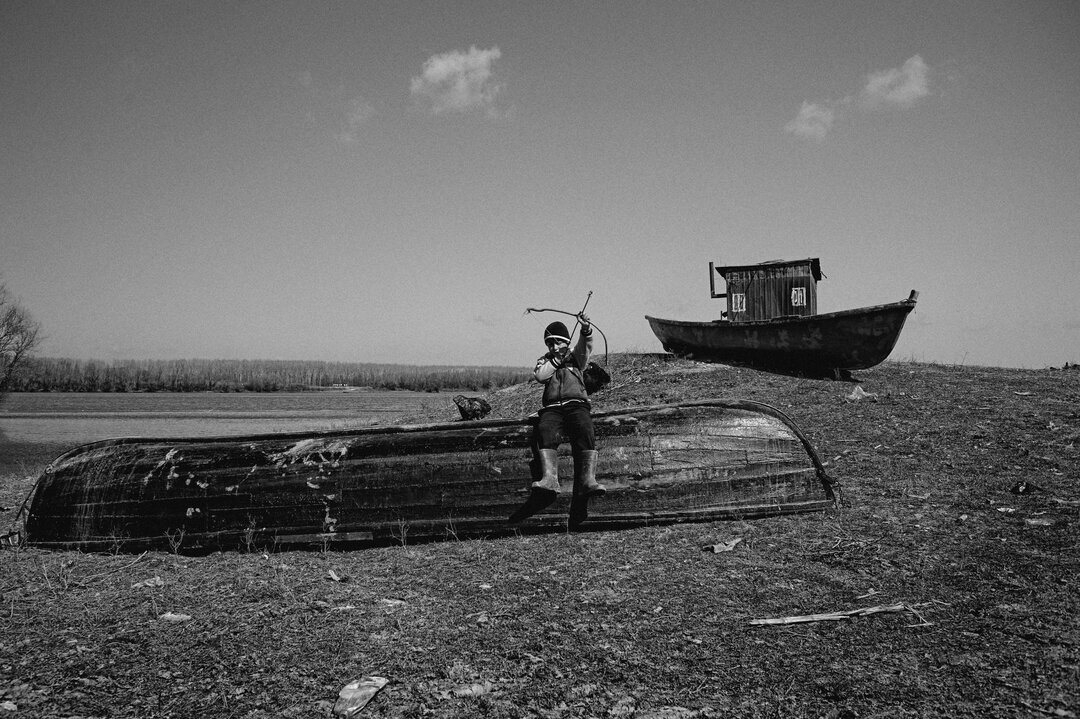
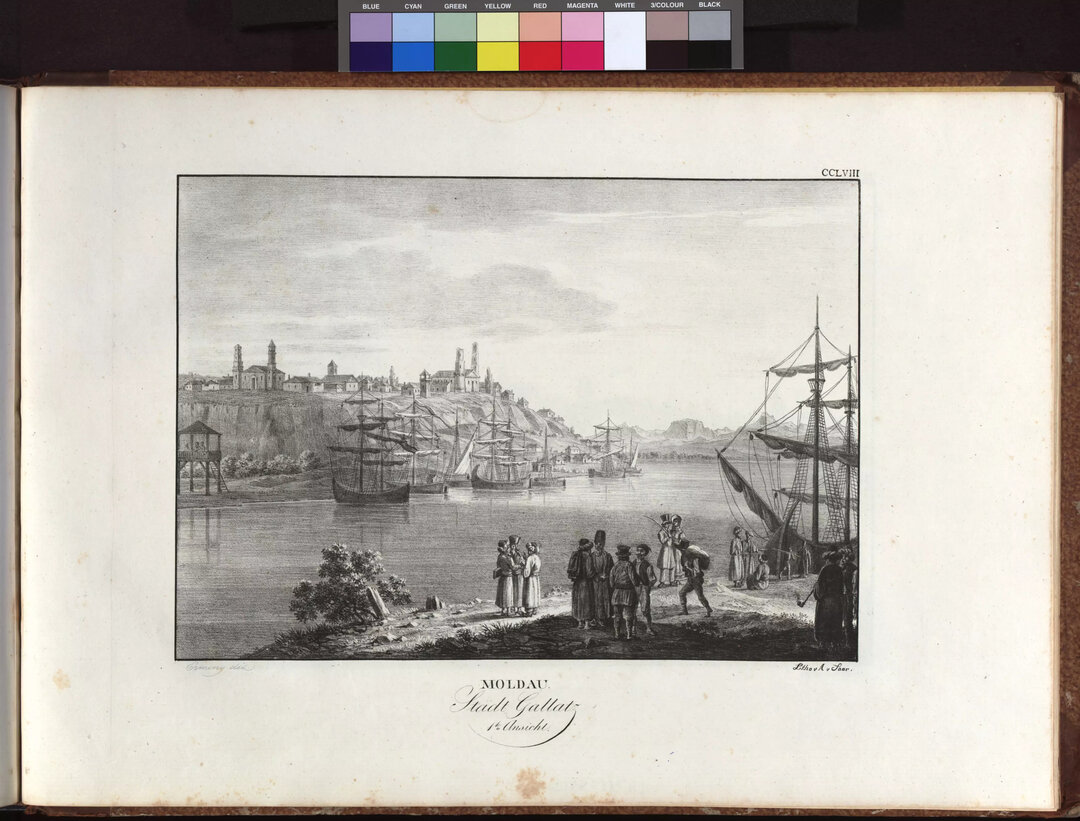
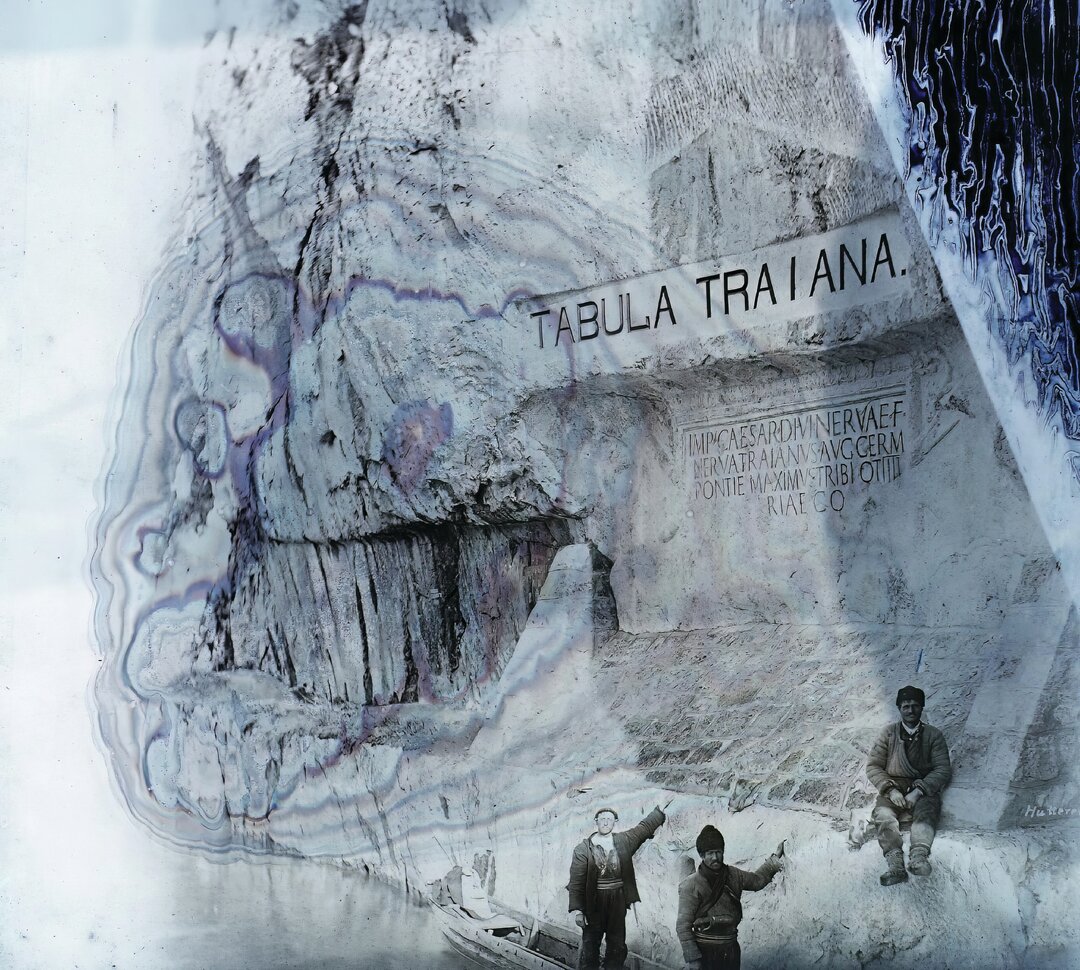

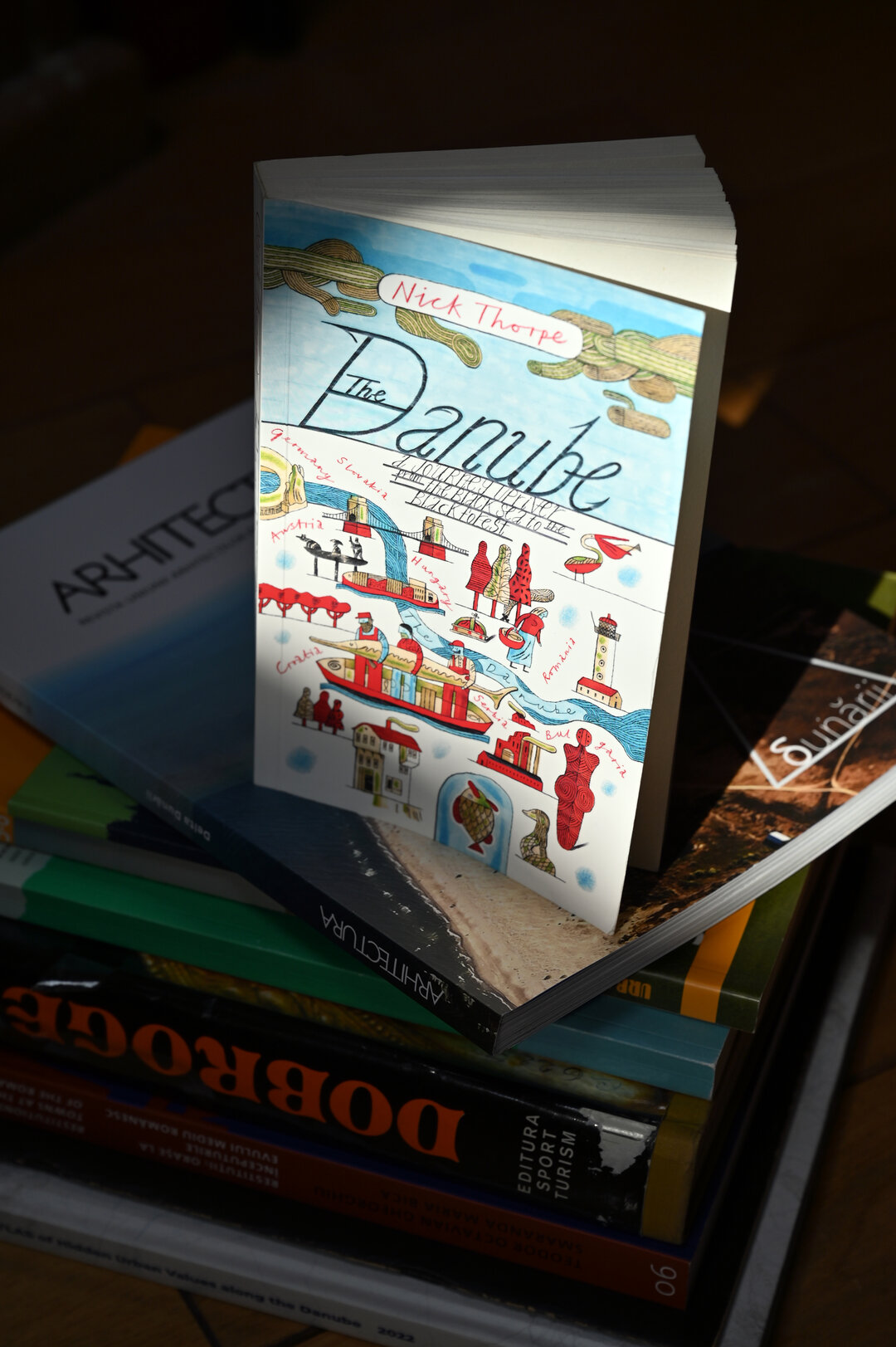
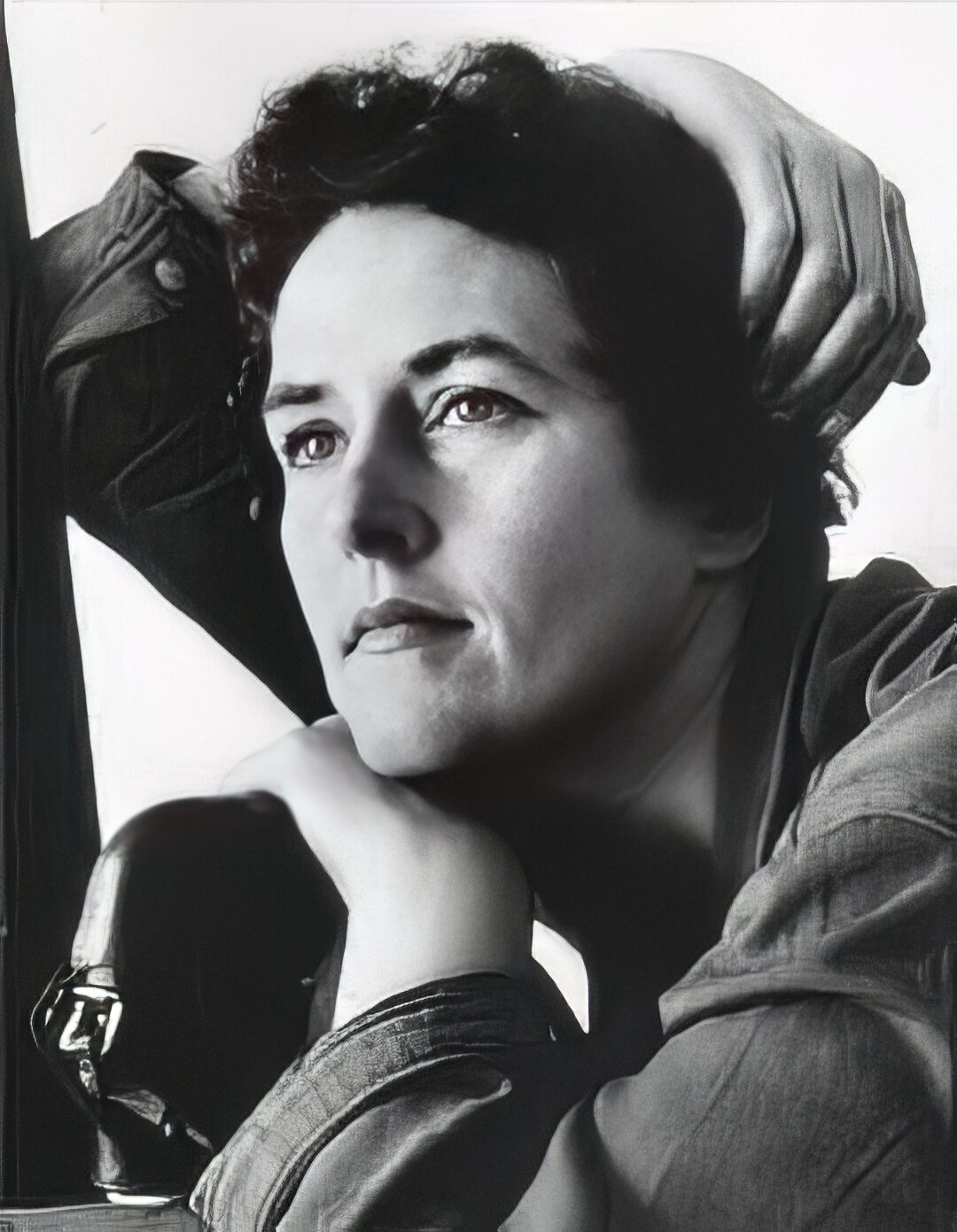

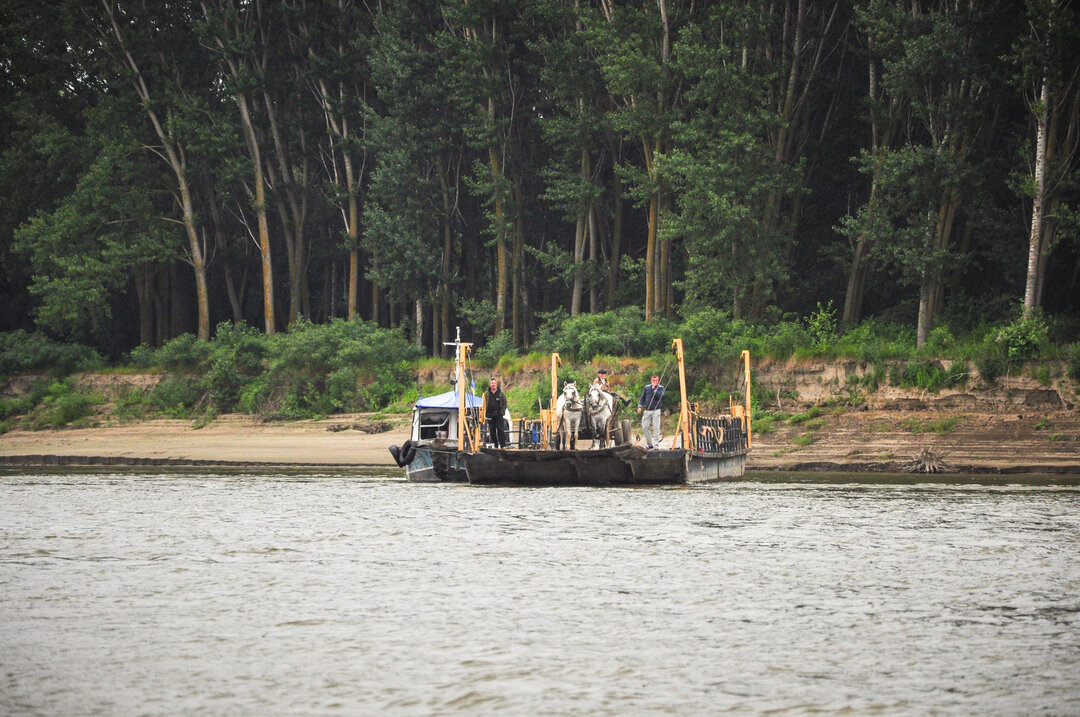

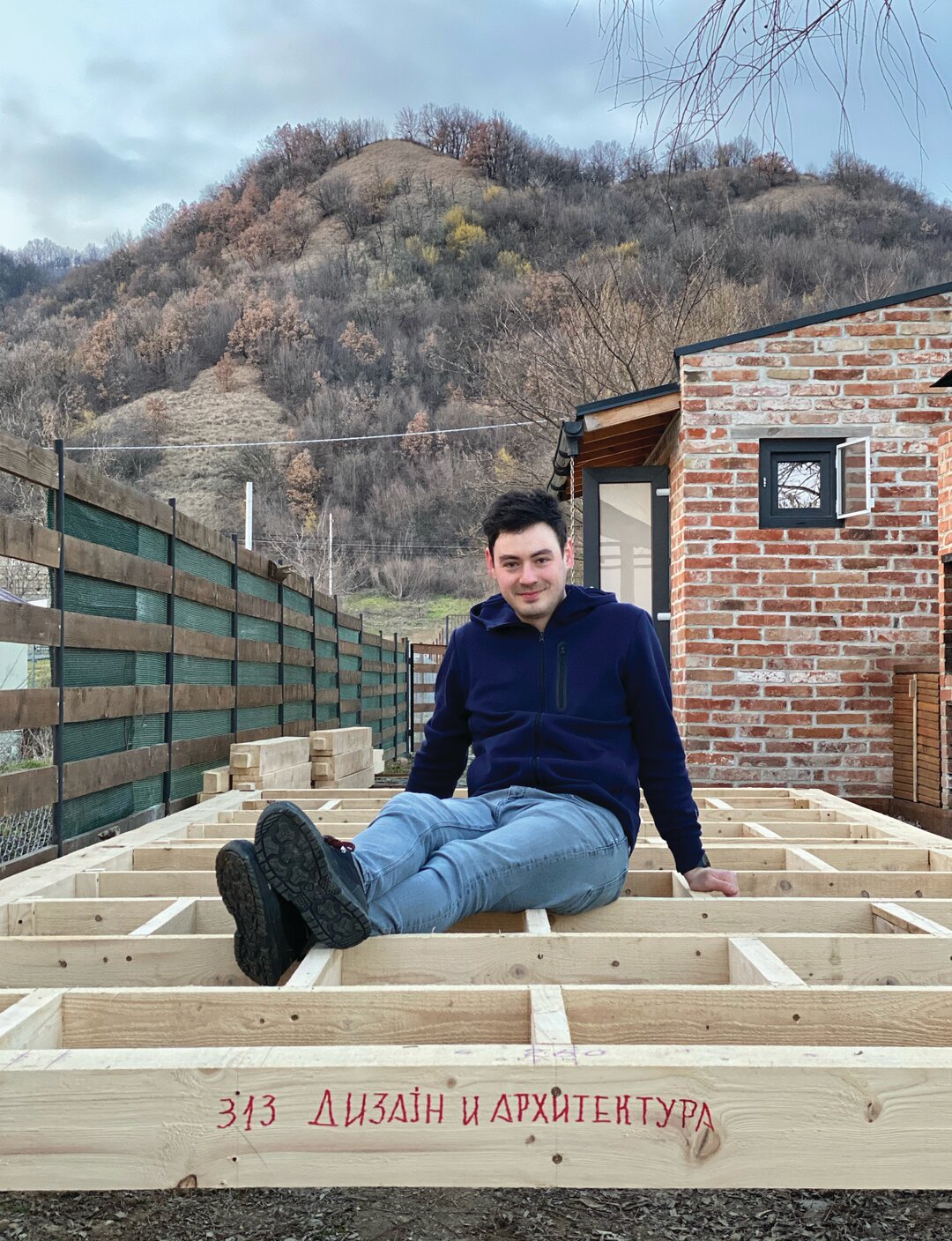

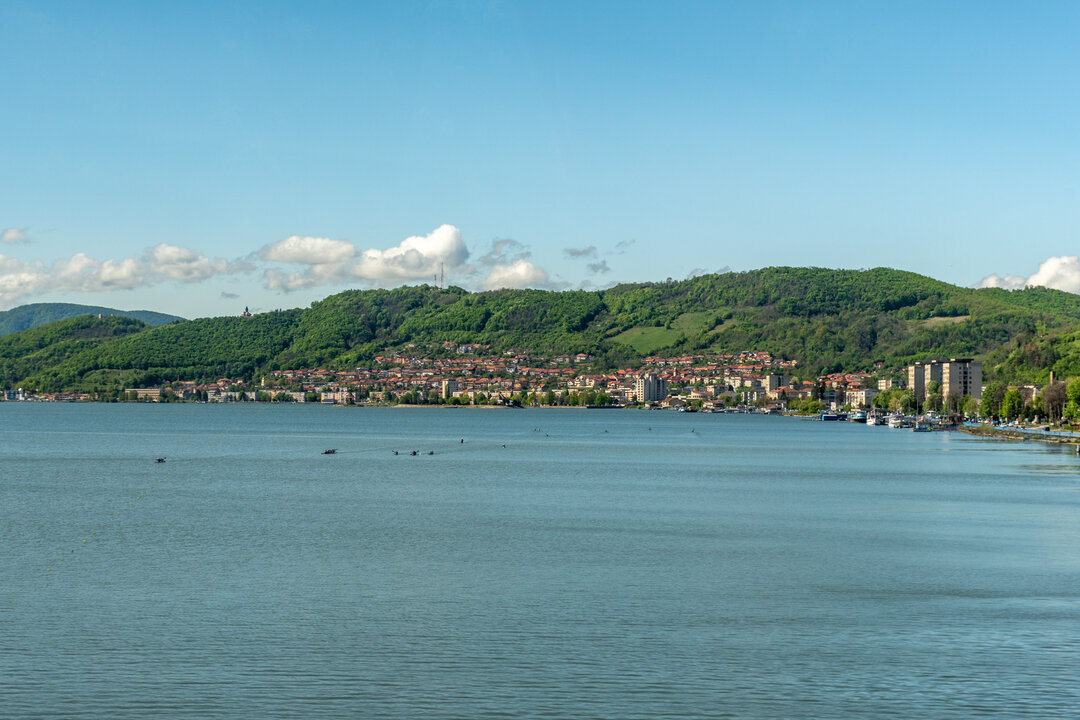
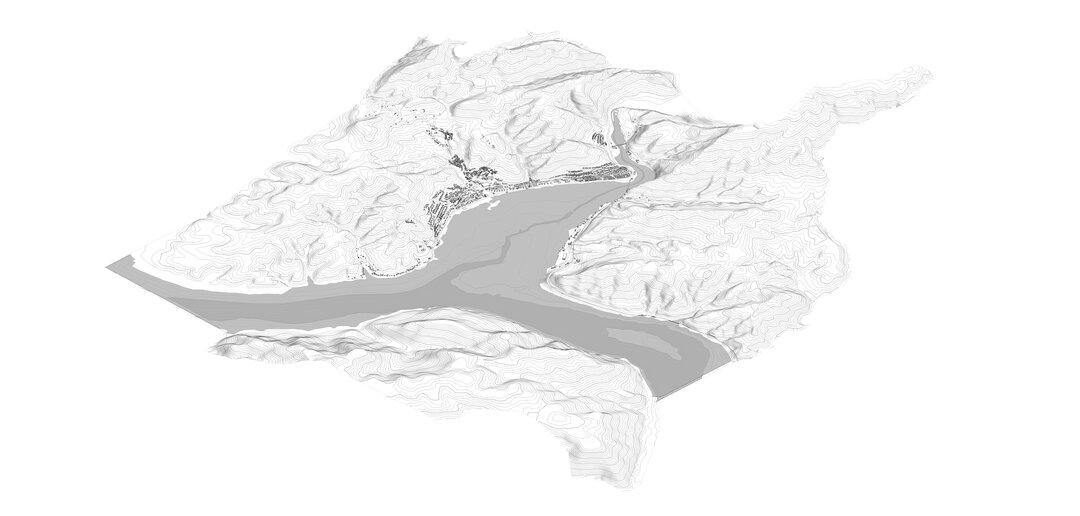




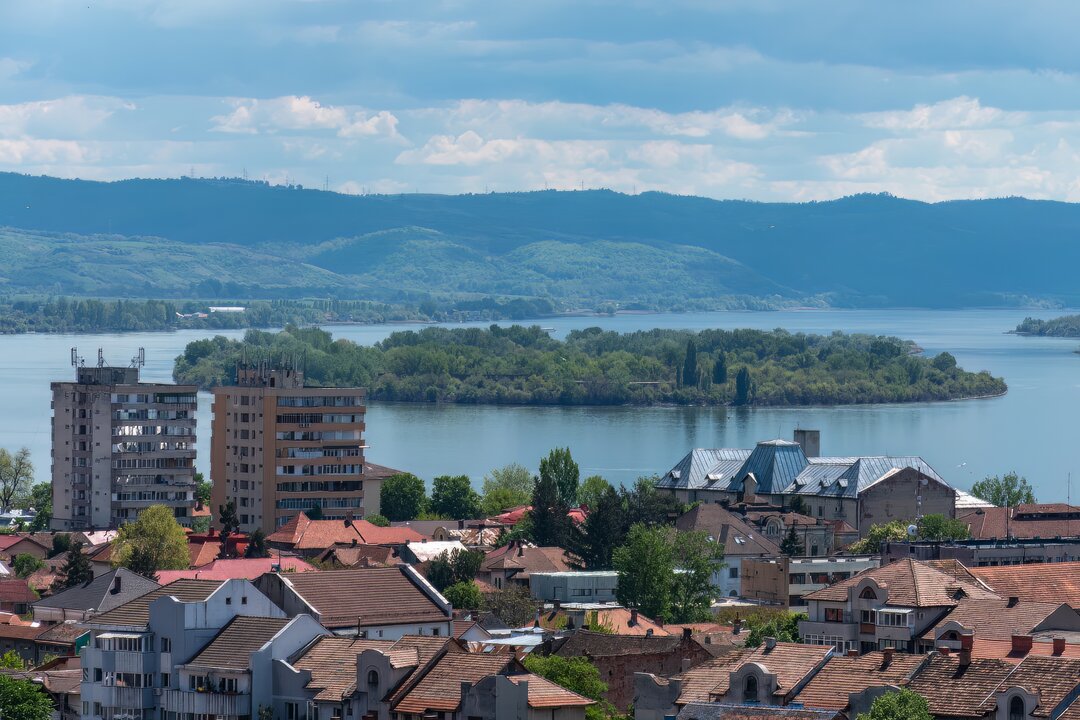
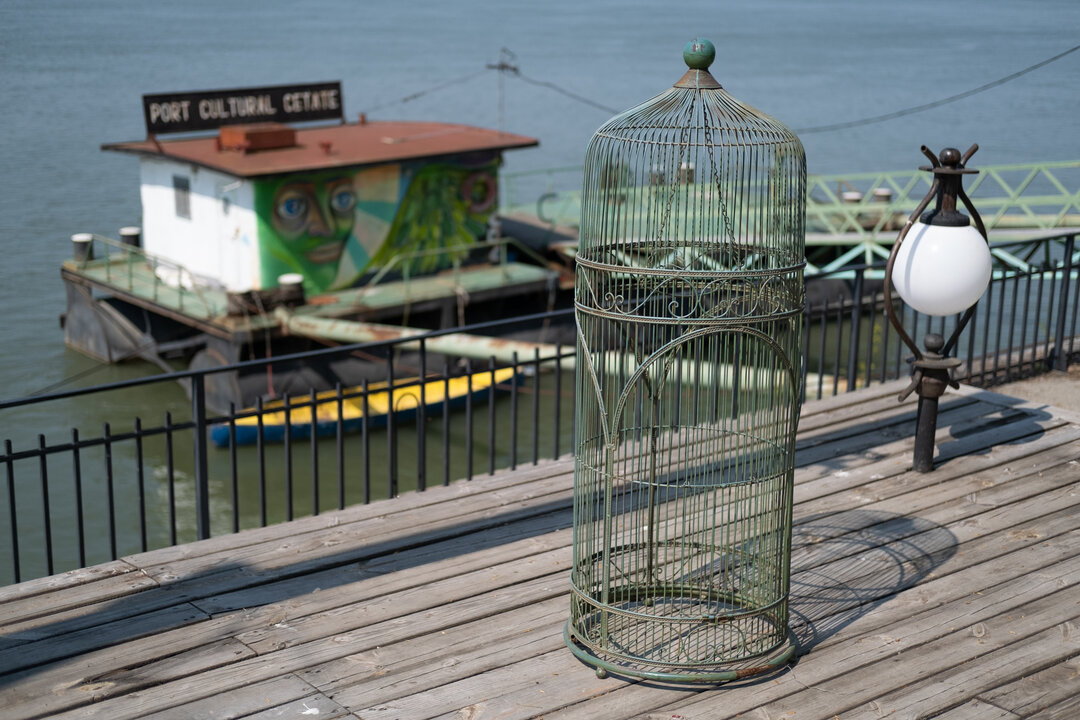
-topaz-denoise-enhance-sharpen--15883-m.jpg)
